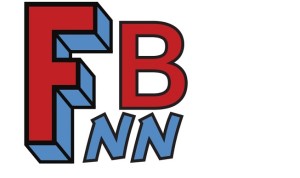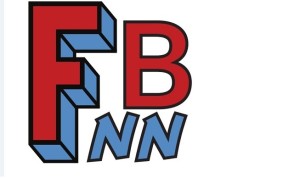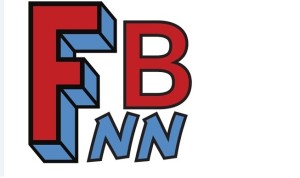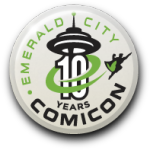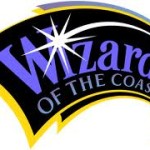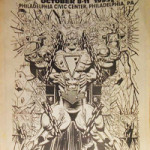 It’s time for another look back at the early history of the White Wolf fan organization, The Camarilla. Last time I wrote about the circumstances of its birth as I remember them. This time I want to look at a very specific event, the first Camarilla convention, Courageous/NercoCon.
It’s time for another look back at the early history of the White Wolf fan organization, The Camarilla. Last time I wrote about the circumstances of its birth as I remember them. This time I want to look at a very specific event, the first Camarilla convention, Courageous/NercoCon.
Again, this is going to be based on my memories of events from over 20 years ago, with as much verification as I have been able to get from other people who were there. I am also going to liberally reference events from my previous Camarilla article, so I recommend going here to read that if you have not already.
I want to specify that this is not about any other Camarilla events, such as the kickoff event at Vikingcon, or any of the other early sanctioned events at various Northwest conventions. This is about the first convention that had a Camarilla focus.
Sort of.
The convention started life as just Courageous Con, named after the chapter of STARFLEET International that I was a member of. As this implies, it was to be a Star Trek convention. The head of our chapter had run successful conventions in Canada and wanted to start one in the Seattle area after moving here. This is all well and good.
However, during the time that the convention was being planned, The Camarilla was coming into being. As I said last time a good number of the original board of directors for the Camarilla were also officers in the Courageous. These same people were also involved in putting together Courageous Con.
So let’s just say enthusiasm over multiple projects started bleeding into each other.
Basically the idea started forming to have a Camarilla convention, but a lot of us were already working on Courageous Con. The solution was to combine the two and have a two–in-one convention. But how would you pull that off?
The answer was to run 24 hour programming.
You read that last sentence right.
Twenty-four hour convention programming. During the daytime hours it would be Courageous Con, and be devoted to Star Trek. At night it would be NecroCon, and be devoted to Vampire and the Camarilla.
I’m pretty sure that I am the first person who started referring to it as the Wereconvention, since it would transform after dark.
So we had to come up with 24 hours’ worth of programming, as well as guests for both genres. It turns out the programming wasn’t as hard, since both were different enough. The trick was getting panelists who were willing to stay up late for the NecroCon side, but even that wasn’t that daunting.
As for guests, we actually did pretty well. For Star Trek we secured George Takei, and for Vampire we had Mark Rein*Hagan and Wes Harris from White Wolf.
Everything looked like it was going well. But frankly, I would not be taking the time to write this down if that was how it ended.
The first hurdle came a couple of months before the convention. George Takei had to pull out of the con. George, like almost all Star Trek actors, had a contract with a company that put on Star Trek conventions around the country. The nature of that contract obligated him to go to a convention they were setting up and cancel his appearance at ours. The kicker is that this last minute convention was being held in Seattle, at a hotel only ten minutes away from where we were holding our con, on the exact same weekend.
Yeah, you are probably thinking the same thing I was, but I have no proof.
So there was a scramble to find a replacement Star Trek guest. The new guest ended up being Jonathan Del Arco. These days, you might know him as Dr. Morales from The Closer and its spin off Major Crimes. Back in 1993, he was best known as Hugh the Borg, from Star Trek: the Next Generation.
So we lost the Major Guest and had a competing convention down the road. But we still had the draw of the White Wolf guys, and the Camarilla was up and running at this point, and growing in popularity. So we were going to be fine.
Right?
Ok, let’s be honest, this was a pretty ambitious plan, running programming continuously for an entire weekend. Add to that the fact that it was the first time running a convention for a lot of the organizers.
And with that in mind, looking back I can honestly say, it could have been much worse.
When I think back on Courageous/ NercoCon, the first thing that comes to mind is why did the hotel think it was a good idea to book a Star Trek/ Vampire convention the same weekend they were also hosting a gathering of nuns? Not that this caused any real conflict, or led to any problems, it just added to an overall feeling of oddness that permeated the hotel the whole weekend. Okay, there was the one instance where someone who had over indulged saw them and yelled out “penguins!” Fortunately he was prevented from approaching them, and was carted off by friends quickly.
One problem that was just beyond anyone’s control was that the volunteer coordinator came down with the flu and was running a decent fever. This was on top of the lack of sleep we were all already operating under.
The biggest problem was just attendee behavior. To this day I am not sure what the hell was up with this. I have been to some rowdy conventions before, but there was just something in the air at this one, and all evidence points to it being the vampire fans at the heart of it.
First was just out and out damage to the hotel. There was a hole in one of the walls, which who knows, it could have been anyone on that. The graffiti on the walls on the other hand was pretty clearly put there by someone into Vampire.
But really it was the beer slip-and-slide on the 3rd floor that really took the cake. The hole and the graffiti could have been the result of spur of the moment passion or alcohol-fueled bad decision making. On the other hand, someone had to bring the slip and slide to the con, indicating a degree of premeditation. It was also dealt with pretty quickly and quietly, as the perpetrators managed to convince the hotel not to kick them, and basically the convention, out. I’m sure it being 3 AM on Sunday helped, as by this point the hotel was already fed up with us, so they just wanted to get it over with without any added drama. I didn’t even know that this had happened until a month later. The convention chairman didn’t know about it until last month when I went online to confirm details for this article and someone who was there confirmed it.
Needless to say, in light of these events, the convention was a one-time only thing.
But I don’t want to leave you with the idea that it was all bad.
Jonathan Del Arco turned out to be a very engaging guest and everyone who interacted with him really like him. Likewise Mark Rein*Hagan and Wes Harris had a great time hanging out with the Camarilla crowd and the LARP with them went extremely well. I will always cherish the look on Mark’s face when I led the Camarilla members in a rendition of the It’s a Small World After All parody I had written for the World of Darkness. It was a fascinating combination of pride and shame.
For me personally it was the first time I met the White Wolf guys, who in turn introduced me to the Wizards of the Coast crew. Within a week of the convention I started hanging out at the WotC offices at their invite, leading to my 5 year stint working there. That in turn led to my current job and, really, my life in general now.
I think looking back on it that the two-in-one convention was just too much. What we should have done was drop the Star Trek part after losing Takei and just focused on Vampire. We had a competing Trek convention down the road that siphoned off most of that audience anyway. If we had done that we would have had tighter focus, and I believe less chaos.
So that was the first Camarilla convention. There was not another specific Camarilla Con during the rest of the time the Board of Directors was located in Seattle. After the BoD was transferred to Salt Lake City it was attempted again, this time with a proper focus. Since then there have been many Camarilla Cons, and some of them have had memorable stories, such as the time they were in the same hotel as a Players ball, and a drive by shooting (for info on that check out this video). But none were as out there in concept as Courageous/ NecroCon.
As with my previous Camarilla story, if anyone from the original Board of Directors, or the Courageous/ NecroCon staff want to write their point of view of what happened, I will publish it here unedited.

